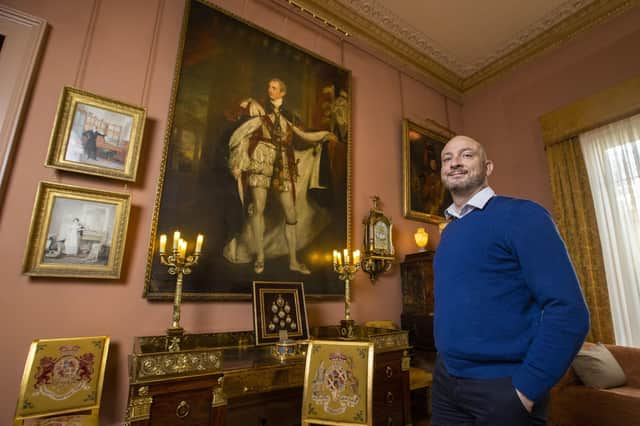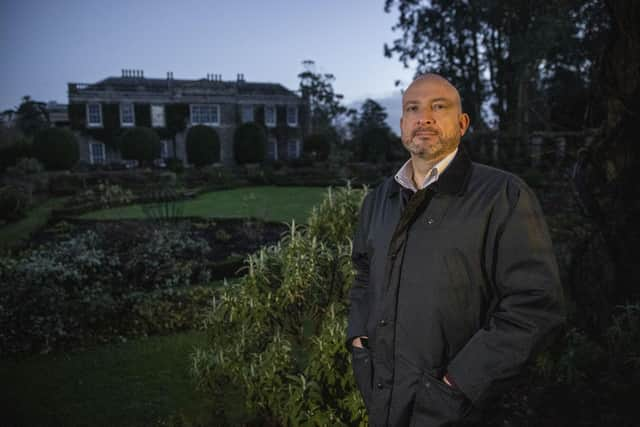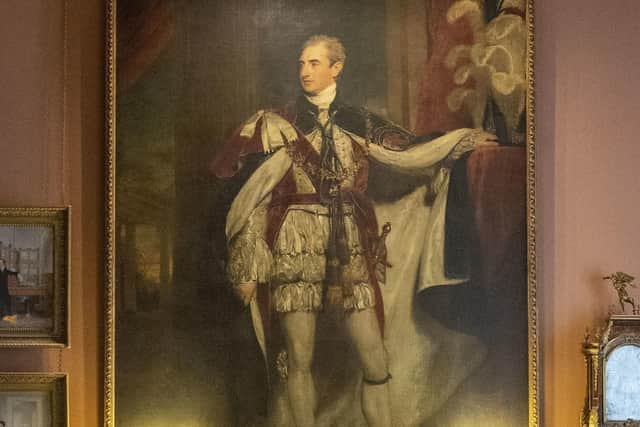Famous Ulsterman Lord Castlereagh to be remembered 200 years after his death


Yet Robert Stewart, one of the most controversial figures in British and Irish history, is recalled as one of the greatest villains Ireland has ever produced.
Lord Castlereagh made enemies in Ireland during his lifetime for his suppression of the 1798 rebellion in Ireland and his championing of the Act of Union, which joined the country to Great Britain.
Advertisement
Hide AdAdvertisement
Hide AdBut he was also notorious in England, where as one of the leading politicians of the day he oversaw a range of harsh and repressive measures culminating in the Peterloo massacre of 1819.


Yet amid the centenary of major Irish historical events, such as the civil war and the creation of the Irish Free State, plans are already in place to mark the 200 years since his death in 1822.
Dublin City Council and Ards and North Down Borough Council have both confirmed plans to mark 200 years since the statesman took his own life, with a considerable programme of events set to take place in the family home of Mount Stewart.
Christopher Warleigh-Lack, curator at the ancestral home of Lord Castlereagh in Co Down, told the PA news agency: “Within an Irish context, he is either loved or loathed.”
Advertisement
Hide AdAdvertisement
Hide AdLord Byron, in a famous epitaph, once invited people to urinate on the grave of the Irishman.


Another poet, Percy Bysshe Shelley, famously wrote: “I met Murder on the way, He had a mask like Castlereagh.”
Daniel O’Connell, the campaigner for Catholic emancipation and one of the great figures in Irish history, called him “the assassin of his country”.
Yet Mr Warleigh-Lack believes it is worth thinking again about the controversial figure, whose own life and times were spent in a deeply turbulent period for Anglo-Irish relationships.
Advertisement
Hide AdAdvertisement
Hide Ad“The Unionist communities, particularly in Northern Ireland, or in the north of Ireland, see him as a hero because he helped push through the Act of Union in 1801.
“But what they overlook is that actually he supported the Act of Union because he was in favour of Catholic emancipation. He wanted Catholic representation at Westminster.
“He felt that if Catholics within the island of Ireland were paying tax, they should be allowed to have a say in how those taxes were spent. So for all those reasons, he pushed through the Act of Union.”
He also points to the years Lord Castlereagh spent shaping the future of Europe at the Congress of Vienna in the wake of the Napoleonic Wars in 1814.
Advertisement
Hide AdAdvertisement
Hide Ad“It actually worked in many ways because Britain was not involved in a war in Europe until 1914. And many countries within Europe remained at peace until 1914. So it was one of the longest periods of peace in European history.
“What’s significant is that many later, peacekeeping organisations like Nato, the United Nations, even the EU processes, are based on the Congress of Vienna way of working.”
Lord Castlereagh, who was born in Dublin, identified as Irish and as an Ulsterman.
Mr Warleigh-Lack, who says that there has already been considerable interest in the anniversary, believes that Lord Castlereagh has often suffered from “subjective” assessments of his legacy.
Advertisement
Hide AdAdvertisement
Hide AdHe said: “The Unionists see him in a particular way. It’s possibly fair to say that most within the Catholic nationalist Republican communities see him as sort of a British imperialist, because for a large part of his career, that’s what he was.
“So what you have to sort of do is unpack all this and get underneath to the man to hopefully form a different view. And that’s partly what our ambition is for next year.”
There are plans for a programme of events from August onwards that will include live re-enactments, music and lectures on the life of Lord Castlereagh.
There are also hopes that every schoolchild in the Ards and North Down Borough Council area will pay a visit to Mount Stewart in the autumn.
Advertisement
Hide AdAdvertisement
Hide AdA spokesperson for Dublin City Council said: “Although we have no specific events planned so far, the anniversary of Castlereagh’s death will be one of the topics dealt with in our 2022 Commemorations Programme.
“The 2022 programme is being planned and details will be published in the new year.”
Mr Warleigh-Lack believes that Lord Castlereagh, one of the most famous men in Europe in his lifetime and who was buried in Westminster Abbey, is often forgotten in Britain.
“I don’t think many people are even aware of him,” he says.
“He is of Ireland. He viewed himself as Irish. So I think within Ulster he’s sort of seen as a hero in effect.
Advertisement
Hide AdAdvertisement
Hide Ad“Whereas in Britain, I think he’s overlooked. He’s just another posh white man that ran the country. And unless you’re interested in political history, his name passes you by.”
It is for that reason that Mr Warleigh-Lack hopes people will come to Mount Stewart next year to see the exhibition.
“I would hope that we wouldn’t be aiming at just Ulster people or Northern Irish people,” he says.
——— ———
A message from the Editor:
Thank you for reading this story on our website. While I have your attention, I also have an important request to make of you.
Advertisement
Hide AdAdvertisement
Hide AdWith the coronavirus lockdowns having had a major impact on many of our advertisers — and consequently the revenue we receive — we are more reliant than ever on you taking out a digital subscription.
Subscribe to newsletter.co.uk and enjoy unlimited access to the best Northern Ireland and UK news and information online and on our app. With a digital subscription, you can read more than 5 articles, see fewer ads, enjoy faster load times, and get access to exclusive newsletters and content.
Visit
now to sign up.
Our journalism costs money and we rely on advertising, print and digital revenues to help to support them. By supporting us, we are able to support you in providing trusted, fact-checked content for this website.
Ben Lowry, Editor